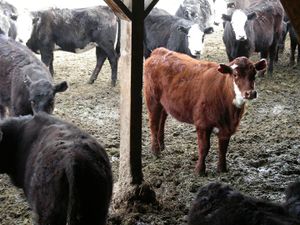Course:LFS100/Animal Welfare
Animal Welfare


Concerns over animal welfare began a half-century ago with the industrialization of food and agriculture, and the discourse around this issue gained momentum with the continued growth of animal confinement systems (i.e. factory farms and feedlots). Animal welfare has been defined in various ways, but is generally understood as being concerned with the physical and mental health of animals. For example, animal welfare research attempts to prevent and mitigate pain, distress, and suffering. It is concerned with the ability of animals to function naturally, such as having exposure to direct sunlight and fresh air, and having the capacity to move around and express adaptive behaviors. Animal welfare research also engages in efforts to ensure animals are free from disease, injury, hunger, thirst, and other basic necessities. For example, research endeavors have helped develop chicken cages that reduce neck and foot lesions, feeding systems that closely match the natural feeding behavior and cycles of livestock, and protocols for reducing the pain and suffering incurred when transporting livestock. In Canada, provinces and territories have the responsibility and regulatory authority over protecting animal welfare. Although each province/territory has its own animal welfare laws, the Criminal Code of Canada prohibits anyone from causing animals to suffer from neglect, pain or injury, and is enforced by police services, provincial and territorial Societies for the Prevention of Cruelty to Animals and/or provincial and territorial ministries of agriculture.
Tips:
- Check out this article that highlights how Canadian Dairy Producers benefit from UBC animal welfare research (see page 40).
- Listen to world renown UBC professor David Fraser lecture on the history and definition of Animal Welfare.